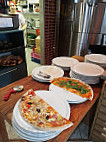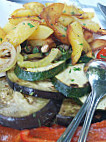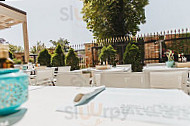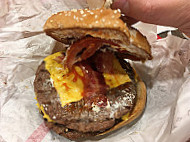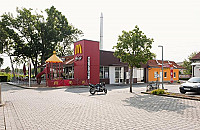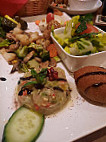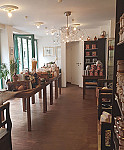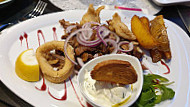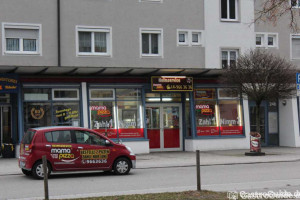"To start with a word game: The Renaissance of the Middle Ages seems unbroken: Medieval markets, knight festivals, medieval restaurants shoot like mushrooms from the historically prestressed German soil. On the markets there is a discontinuation of the hurried goods: the art of craftsmanship is reflected again. The feasts are colorful costumes with fire and fighting games, pale shows and Minnesang. And the restaurants? Was the food really so excellent in the Middle Ages that it is worth reviving? This was for us to find out, especially as the Anno 1475 in Flyer and on the homepage “Prunk medieval banquets” and “Fürstliche Gelage” promises. The less-historical epoch may be wondering about the definition of the name on 1475, especially as this falls into the time when the Middle Ages with the invention of the book printing, the conquest of Constantinople, the discovery of America, etc. were already at its end, but if we let the history of Landshuts revue in our memory, then of course we immediately notice that 1475 Duke Georg With the word “table” we have now performed an elegant swing from our historical excursion to the establishment of the inn... The room is friendly and naturally equipped with medieval accessory. Tables and benches are made of solid wood, which covers seating areas with furs, which make the stiffening on such archaic furniture to some extent acceptable. Otherwise, candlelight, with the white stumps look stylish, while the red do not fit to the Middle Ages Amente, just as little the autumn setting (in spring! , which also consist of plastic. After all, the “Made in ...” sticker was not to be discovered thanks to the gloomy light, but we rather tap far-east mass goods, because of old-German craftsmanship... Here we would have preferred a prime pot for 99 cents. For this purpose, food and beverages are served on earthen plates and humps, but flanked by modern stainless steel cutlery and paper napkins. As far as food is concerned, the range between relatively normal foods, which are also found in restaurants without medieval demands, and quite unusual compositions. The kitchen therefore really strives to revive forgotten recipes, which can be seen not least in the spice combinations: honey, coriander, ginger, cinnamon, clove... all spices that were already common in this country thanks to intensive trade relations even in late Middle Ages. Not yet known, however, were then potatoes, corn, paprika, tomatoes, and so one is rightly looking for these vegetables on the map. Very to praise the house-baked Dinkelbrot. Although it is not a pure germinal bread, it is a mixture with wheat or Wheat intersection, even for some use it is a bit too spicy, but there are fewer and fewer restaurants that bake their bread according to their own recipe or make it exclusively bake. So here is our absolute chapeau! The bread is widely used, as croitons, in bread baskets and as garlic bread – in all cases very tasty, and the garlic bread was also generously sprinkled with parsley. We also ate at appetizers: homemade vegetables Consommé with plentiful inserts and separately served croitons, excellent flame cake with rag, ham, onions, cheese etc. Very good. However, we were skeptical about the unusually fluffy and yet crawling dough and learned on request that industrially manufactured frozen doughs are used for the flame cakes – ultimately the most important tag of the inn. We find that as a shame as incomprehensible: A flame-cake dough costs a few cents in production and takes no 20 minutes, keeps cool at least one week and is rolled out in a few seconds hauch-thin. In this industry, flame cakes are certainly contained additives which have not yet existed in the Middle Ages. But after all, doughlings of very high taste and sensory quality are used. Crabs with bacon and cold sour cherry sauce. Very good, the crimp with high cheese content, the cherry sauce tasted fine and picant. Main dishes: grilled zander fillet, mushrooms, almond brokkoli, fried dinkel (15,20 € . Fish nicely grilled on the skin, however already a little dry – thin zander fillets juicy to grill, is also a challenge. The broccoli was fresh and not a TK. The spelt grains were cooked rather than fried, but good and a very original supplement. Unfortunately, the mushrooms came from a can and were fully absorbed with liquid. Brilliant, herbal butter, spelt vegetables, roast bread, freshly grated horseradish (17,90 €). Excellent, meat cooked to the point, the vegetables tasted very well... Unfortunately, the frying was rolled from Wammerl, so more than half of the frying consisted of fat as well as flaky rather than crispy skin. Fat and skin we didn't eat, but let go back. The noodle slices were good, however arg dry, bacon and cabbage rabi very good. We would have liked to have spent some euro more for a lean rollerbow, as we know from Spanferkel ansich. Pavesen with apple plum filling (5,50 € . Very good. Here a normal toast bread was used instead of medieval dinkeletal bread, which was of advantage because the dinkel bread would have been too spicy for a dessert. Flame cake with apple slices, honey and almonds (7,90 €). Here we were surprisingly offered to flamboy the flame cake at the table, which was accepted by us (although probably pyromanically cheerful). Using a plentiful Calvados, our waitress fanned an aesthetically attractive table fireworks, and yet Calvados remained so much on the crispy flame cake that we were glad that this guest had no ride today. Limonenjoghurt with honey and crochet (4,90 €). This was a simple, good, light dessert, however we would have a smaller portion, better yogurt quality preferred. Operation This deserves its own “chapter”, because it was extremely kind and always attentive. If we had a restoration, we would do a lot to get them off. When we talked about the excessive fat content of the frying, she offered free capucchini as a compensation. We bore them with questions, but they always answered patiently, competently and above all honestly. She often looks over her shoulder and likes to answer questions of detail, such as the exact recipe of the crummed claws. Before we left the restaurant, she spontaneously invited us to a digestive schnapps at the vase. In short, you seem to be enjoying the job, and this is what the guest notices and therefore looks beyond some lack. Conclusion The keyword “medium age” is not only a customer-loving keyword here, but is lived in the courts. However, this should also be reflected in the fact that convenience is completely dispensed with, especially since the finished products used here could be produced themselves with minimal effort or recourse to TK. Few changes in detail in the facility would work miracles. Nothing could be felt by prunk and princely dishes, it was ultimately a nice but quite normal meal. The price performance ratio is good, yet we would like to add extra guilders for even better quality."
 Landshut
Landshut
